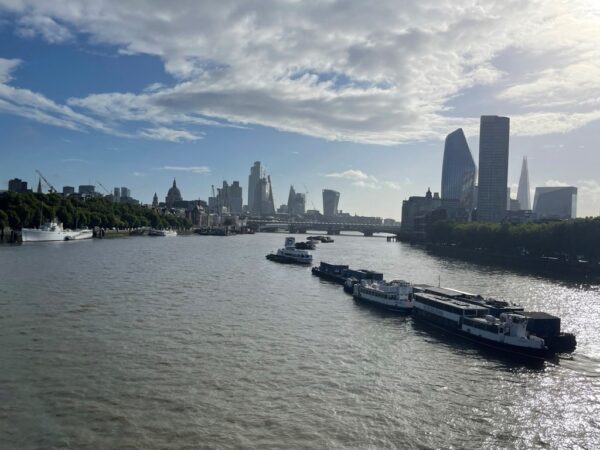Thames21 launches new Five Year Plan with call for more collaborative action to get rivers ‘climate-ready’ for impacts of floods and droughts.
The environmental charity has announced plans to ramp up its efforts to work with communities and river stakeholders to help develop nature-based solutions to be better prepared to tackle the growing impacts of climate change and extreme weather events.
Thames21 plans to develop and deliver nature-based strategies and solutions that help tackle the impacts includes developing ten sustainable drainage projects annually by 2028.
Debbie Leach, CEO at Thames21 said: “The clock is ticking on preparing the river networks for the extremes of weather heading towards us. This is Thames21’s own plan – we need to hear more from all sectors and how plans will work together to protect not just our capital city and communities of the Thames Basin, but protect people around the country and around the world.”
Creating wetlands, planting trees, and supporting sustainable drainage systems to help improve biodiversity and help capture rainwater to reduce flood risks are just some of the solutions the charity will be developing to help make our rivers healthy and climate resilient.
The work forms part of three priority areas featured in Thames21’s Five Year Plan, which include:
- Tackling the Climate Emergency through creating climate-resilient rivers and communities
- Tackling the Nature Emergency by supporting healthy, varied wildlife populations in rivers and catchments
- Tackling the Social Emergency by working to improve the health and wellbeing of people and communities
River Source dries up
The source of the River Thames, which is 215 miles long, is generally recognised to be at Trewsbury Mead, Gloucestershire in the Cotswolds – 38 main tributaries feed the Thames between its source and Teddington.
At the beginning of August the prolonged drought saw the source of the river dry up, shifting from its official start point and move more than 5 miles (8km) downstream.
The report says that in some of the areas where Thames21 works, rivers are among the most degraded in the country – due to sewage, urban, industrial, and agricultural pollution, physical modification to river habitats, water abstraction, spread of invasive species and land use changes in river catchments.
Thames21 is now urging the government, private sector and charities to work together to deliver effective action. The NGO also has the ambitious aim of expanding the number of volunteers actively involved in learning maintenance and river improvement projects to 12,000 by 2028.
This full story can be read on WaterBriefing here and on the Thames21 website here.
Click here to download Thames21 Five Year Plan.

No Comment